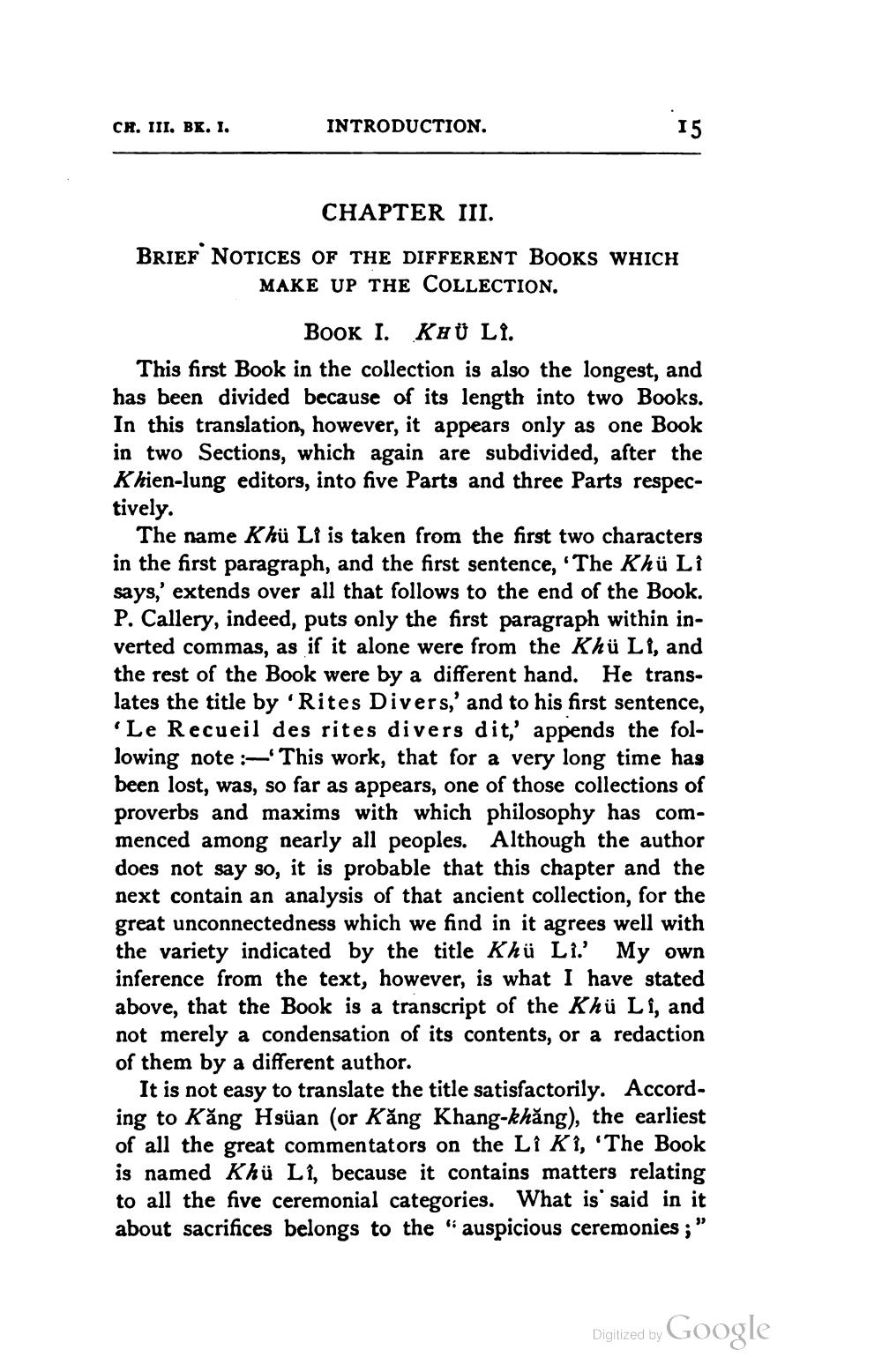________________
CA. III, BK. I.
INTRODUCTION.
CHAPTER III. BRIEF NOTICES OF THE DIFFERENT Books WHICH
MAKE UP THE COLLECTION.
BOOK I. KHÜ Li. This first Book in the collection is also the longest, and has been divided because of its length into two Books. In this translation, however, it appears only as one Book in two Sections, which again are subdivided, after the Khien-lung editors, into five Parts and three Parts respectively.
The name Khü Li is taken from the first two characters in the first paragraph, and the first sentence, 'The Khü Li says,' extends over all that follows to the end of the Book. P. Callery, indeed, puts only the first paragraph within inverted commas, as if it alone were from the Khü Li, and the rest of the Book were by a different hand. He translates the title by 'Rites Divers,' and to his first sentence, 'Le Recueil des rites divers dit,' appends the following note :- This work, that for a very long time has been lost, was, so far as appears, one of those collections of proverbs and maxims with which philosophy has commenced among nearly all peoples. Although the author does not say so, it is probable that this chapter and the next contain an analysis of that ancient collection, for the great unconnectedness which we find in it agrees well with the variety indicated by the title Khü L 1.' My own inference from the text, however, is what I have stated above, that the Book is a transcript of the Khü Li, and not merely a condensation of its contents, or a redaction of them by a different author.
It is not easy to translate the title satisfactorily. According to Kăng Hsian (or Kăng Khang-khăng), the earliest of all the great commentators on the Li K1, 'The Book is named Khü Li, because it contains matters relating to all the five ceremonial categories. What is said in it about sacrifices belongs to the "auspicious ceremonies ;”
Digitized by Google




